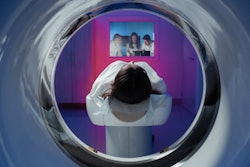Outsourced radiology reports significantly underreport many key elements of abdominal CT scans when compared with the reports of inhouse radiologists, a U.K. study has found.
"Emergency abdominal CT scan reports from the outsourced radiology reporting service were found to underreport critical information about various intra-abdominal organs. Specifically, outsourced reports frequently omitted comments on the biliary system, spleen, kidneys, lymph nodes, mesentery, peritoneum, vasculature, bones, soft tissues, and lung bases," noted Emmanuel Obayi and colleagues from North Manchester General Hospital in an article published on 6 November by Cureus, an online, open access multi-specialty medical journal run by Springer Nature.
This underreporting raises significant concerns about the possible omission of important scan findings and can complicate the assessment and management of acute surgical patients, they wrote. Also, they found the freetext reporting format omitted critical details of abdominal CT scans when compared with structured reporting.
The researchers set out to compare abdominal CT scan reports composed by locally employed radiologists to those composed by an outsourced radiology reporting service for patients admitted with acute surgical pathologies. They included all patients aged 18 years or older who underwent emergency abdominal CT scans, but excluded patients who had abdominal CT for trauma, non-emergency reasons, or other imaging modalities.
The team evaluated 192 abdominal CT scan reports conducted between August and October 2023. Of these scans, 109 (57%) were performed on men. The median age was 59 (range 18-97 years). Locally employed radiologists reported 113 scans (59%), while 79 scans (41%) were reported by outsourced radiology services. Incidental findings were noted in 36 scans (19%).
The most common indication for CT was suspected appendicitis (30, 16%), followed by abdominal pain (28, 15%). Three scans (2%) did not have a documented indication. No abnormalities were detected in 42 scans (22%), and appendicitis was diagnosed in 21 scans (11%). The freetext reporting format was used in 149 scans (78%).
Of the structured reports, 33 (77%) were written by locally employed radiologists, while 10 (23%) were written by the outsourced radiology reporting service. Conversely, similar proportions of freetext reports were generated by locally employed radiologists (80, 54%) and the outsourced service (69, 46%).
"Structured reports were more likely to document most intra-abdominal structures, including incidental findings, compared to freetext reports. However, some of these findings were not statistically significant," the authors wrote.
The structured reports were significantly more likely to include comments on the spleen, adrenals, mesentery and peritoneum, and bones and soft tissues. While trends suggested that structured reports were more likely to include comments on the biliary system, pancreas, vasculature, and incidental findings, these differences were not statistically significant, they noted. "Additionally, structured reports consistently included comments on the liver, kidneys, gastrointestinal tract, lymph nodes, and lung bases, leading to extremely high ORs without calculable confidence intervals."
The Manchester team recommends further studies auditing a broader range of outsourced radiology services. This is essential to ensure that clinicians receive high-quality reports, enabling effective and efficient emergency surgical care, they wrote, adding that this study was previously presented as a meeting abstract at the 27th Association of Upper Gastrointestinal Surgery of Great Britain and Ireland (AUGIS) Annual Scientific Meeting on 12 September 2024.
You can read the full article here.



















